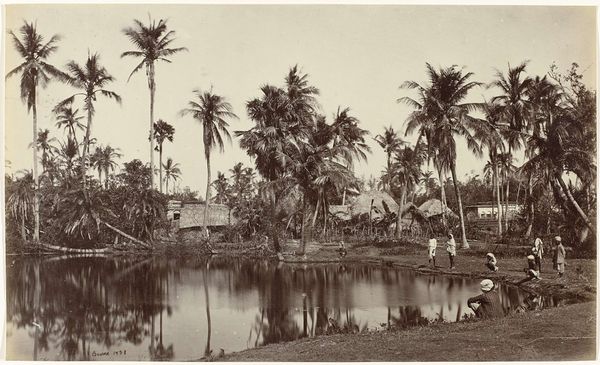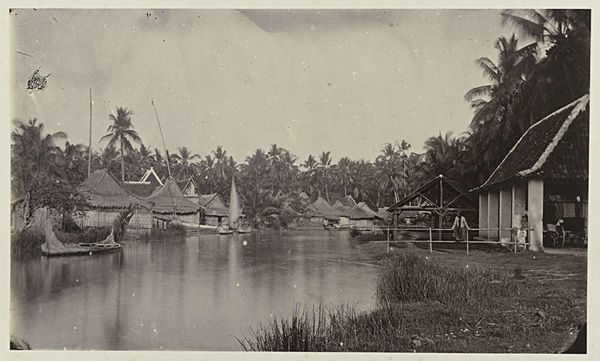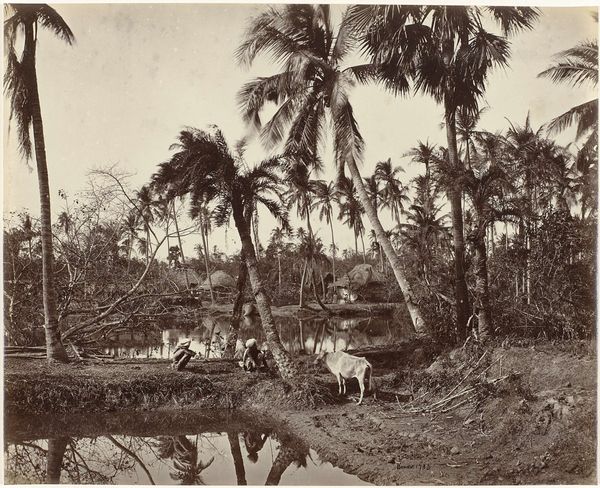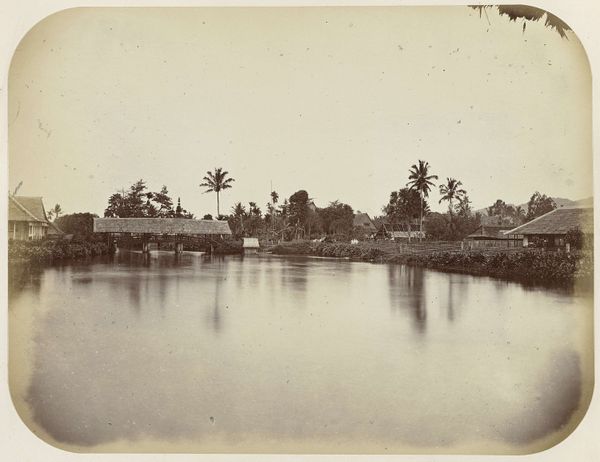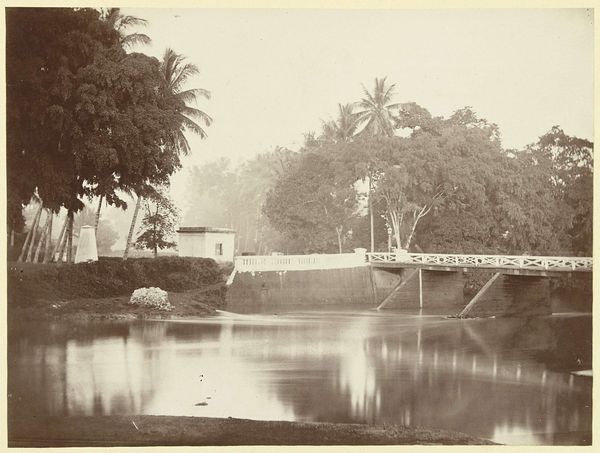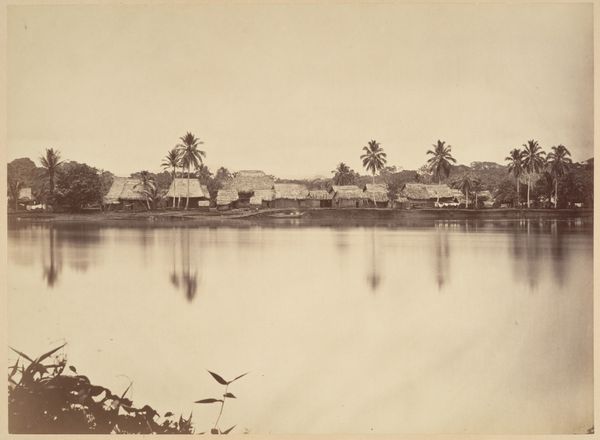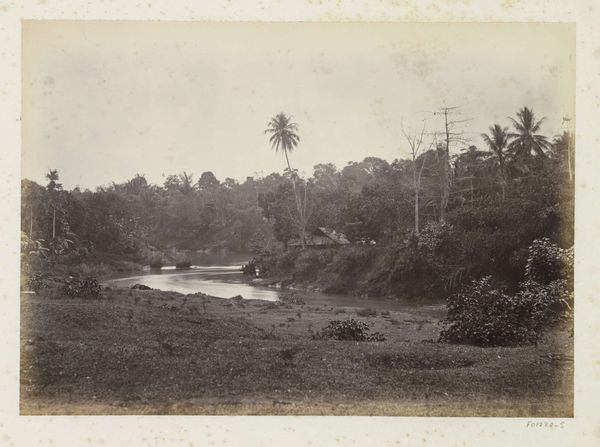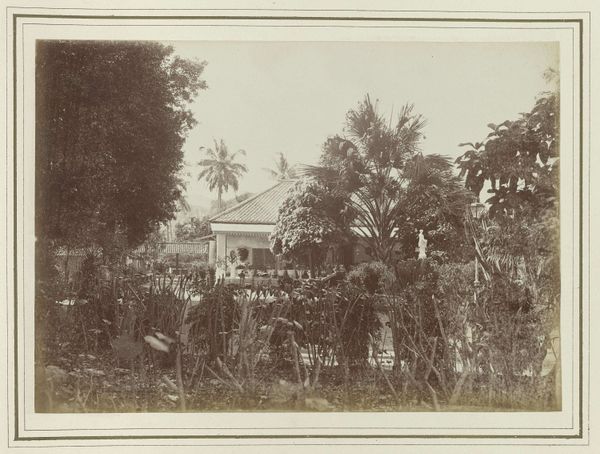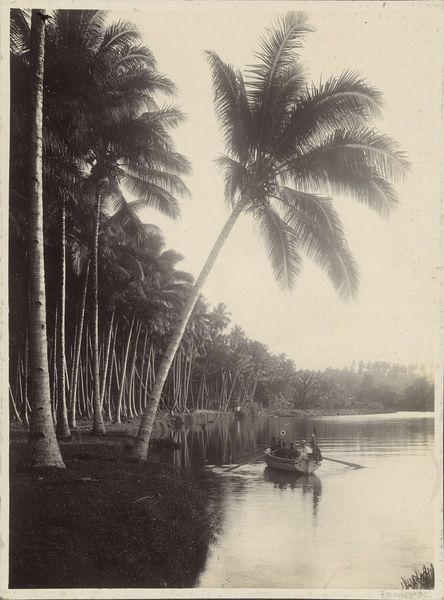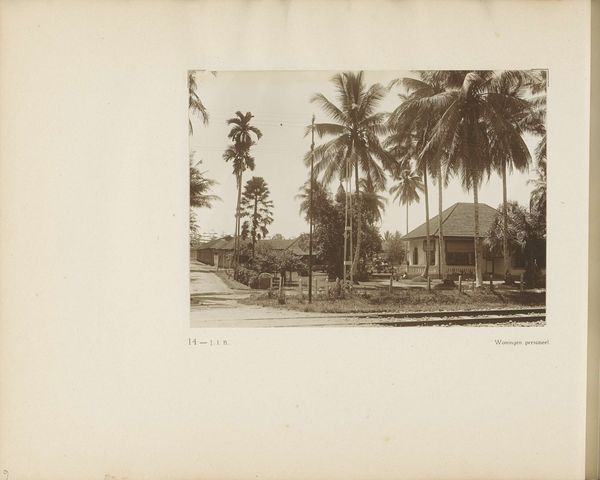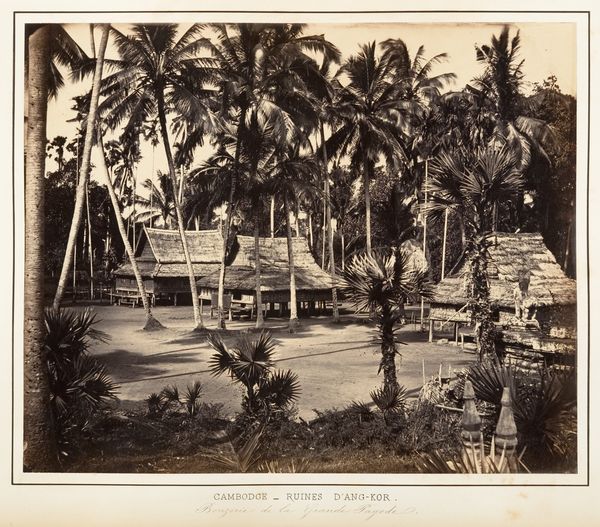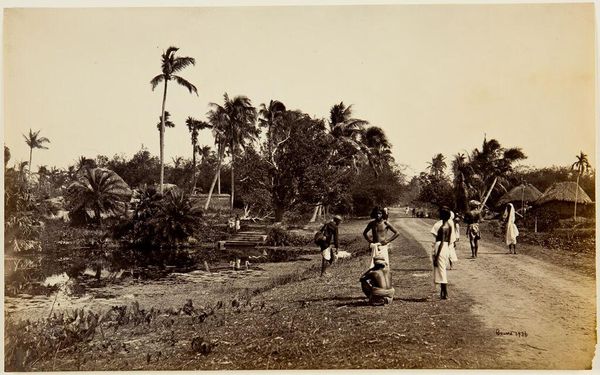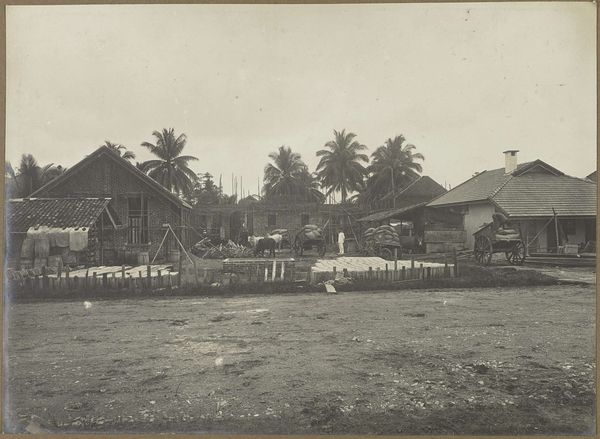
photography
#
landscape
#
photography
#
orientalism
Dimensions: height 226 mm, width 285 mm
Copyright: Rijks Museum: Open Domain
Curator: Right now, we’re looking at a photograph titled "Village view on a riverbank in Bengal, India" by Samuel Bourne, taken around 1867. It’s a fascinating example of early landscape photography. Editor: Immediately, the sepia tone pulls me in. It's not just a scene, it's an atmosphere—a languid afternoon warmth hangs heavy in the air. The stillness of the water, reflecting the foliage... there’s something dreamlike about it. Curator: Bourne was known for capturing the grandeur of the Himalayas, but this image shows a different side of India. What do you make of the composition, particularly the placement of the village dwellings? Editor: Well, the dwelling becomes part of the overall landscape. Not dominating it but blending, harmonizing. The palms are reaching up towards the sky as if drawn from the thatched rooftops themselves. This feels…respectful. And in a deeper way, I perceive the idea of cyclical growth and decay inherent to organic life. Curator: Indeed. And those figures gathered near the house? They are a critical part of the composition, suggesting a narrative of daily life deeply intertwined with nature. There’s a potent contrast between the dense vegetation and the small symbols of civilization: human, dwellings, the slight clearing… It presents humanity's imprint in such an intricate landscape. Editor: Precisely. Look at the reflection in the river! The shapes become fluid, uncertain... and as that happens, all clear separations and edges lose their grip, everything returns to the fold... what’s "nature," what's "human," ceases to have any distinction! I wonder if that blurring symbolizes how we imprint ideas of ourselves and our sense of civilization on other cultures. What seems solid is actually ever-shifting. A reflection can be deceptive, but insightful nonetheless. Curator: Bourne was a part of a colonial context, inevitably shaping his gaze. Can the photograph shed some light on how landscape depictions functioned to create knowledge? Editor: Possibly! What does Bourne show? Life is clearly unfolding, the earth provides... Perhaps that's the message that's easy to deliver back to an imperial seat. The beauty is, once captured, free for interpretation… including our own. This unassuming glimpse makes me ponder the intricate connections woven between people, their environment, and the gaze that observes it all. Curator: Absolutely. Thank you for taking us deeper into that intersection of the image, history and symbolism. Editor: It's a joy—or should I say journey—to join those kinds of dots...to have felt Bourne's work once again... in order to open our eyes!
Comments
No comments
Be the first to comment and join the conversation on the ultimate creative platform.
